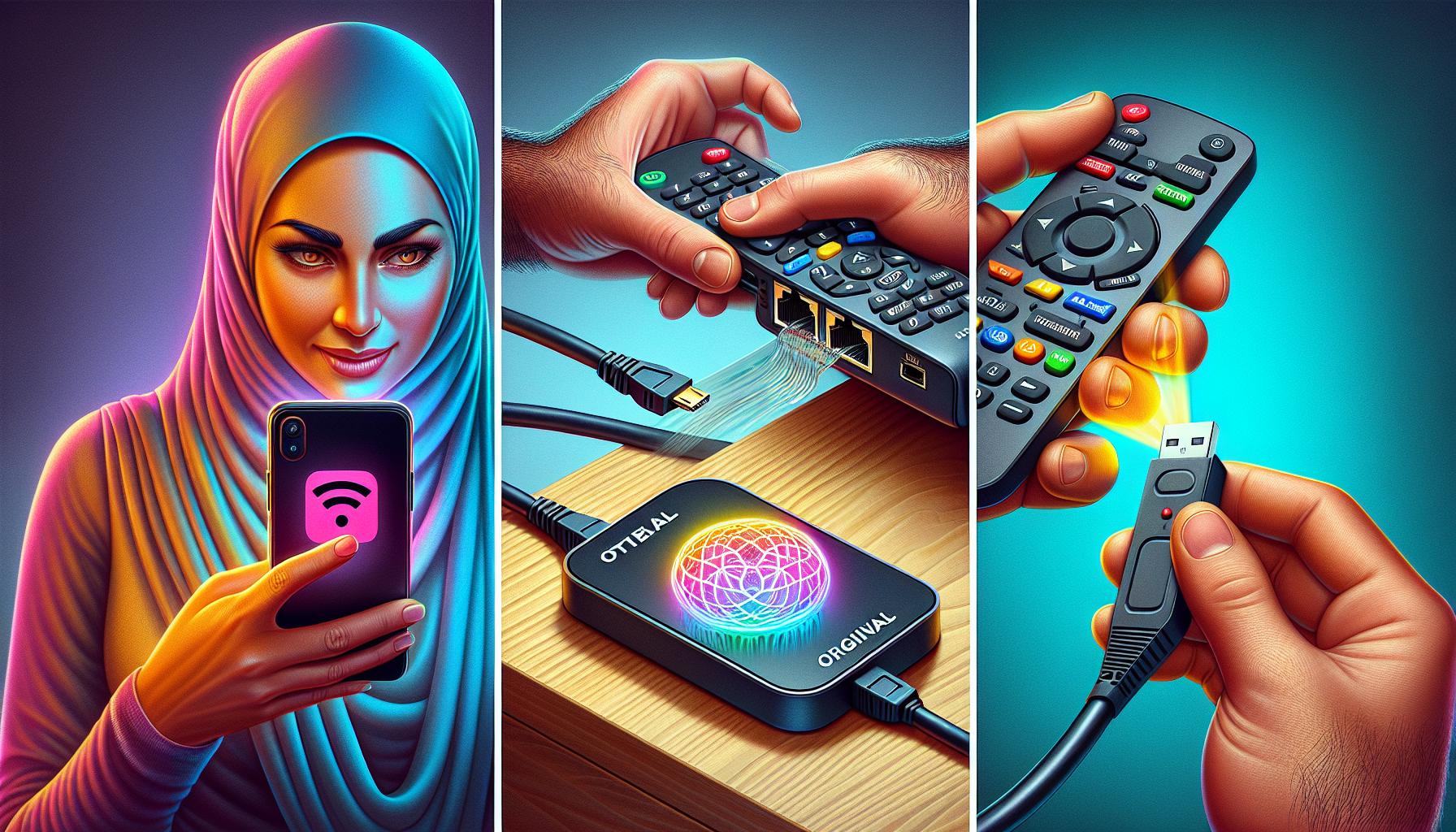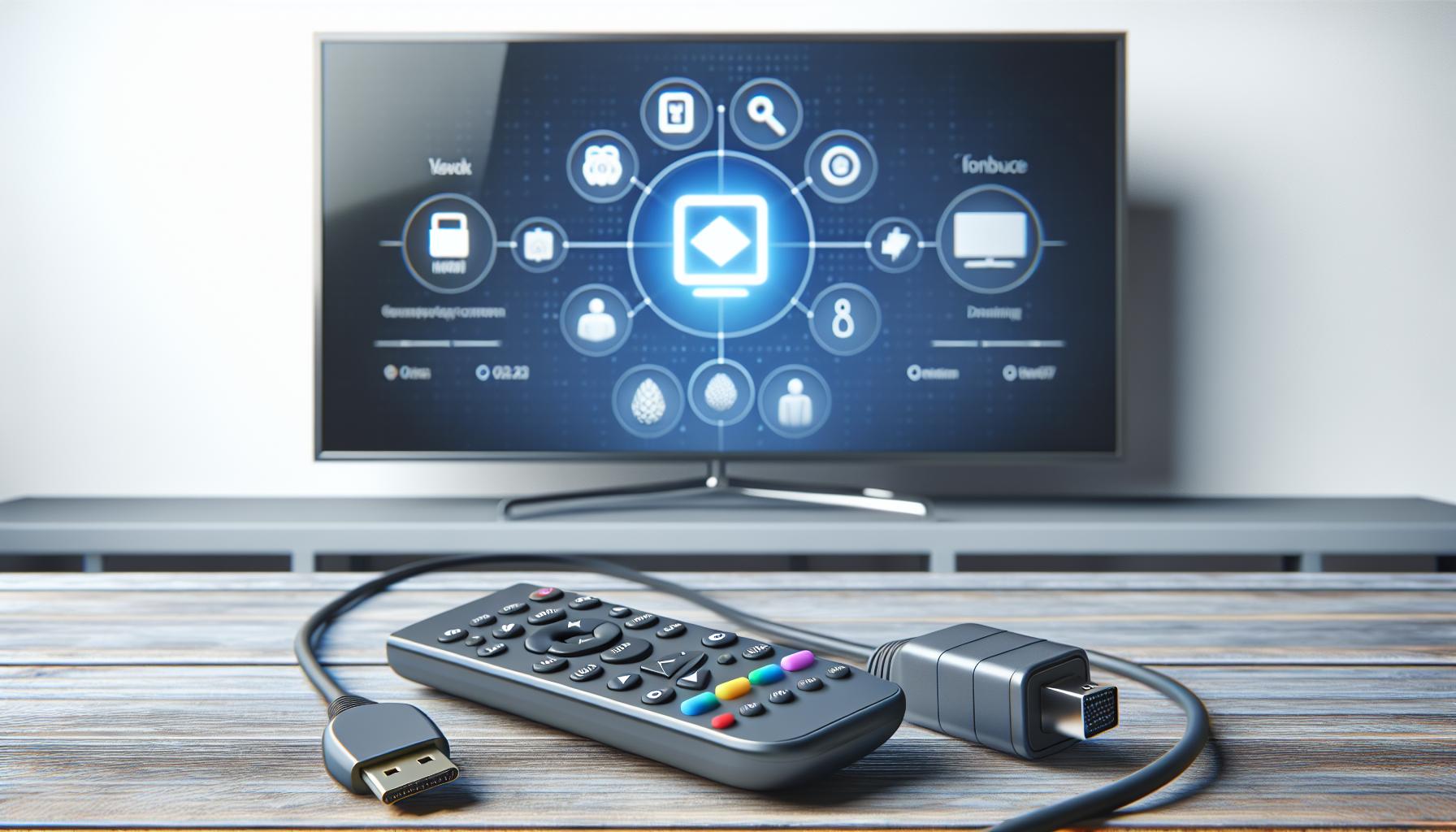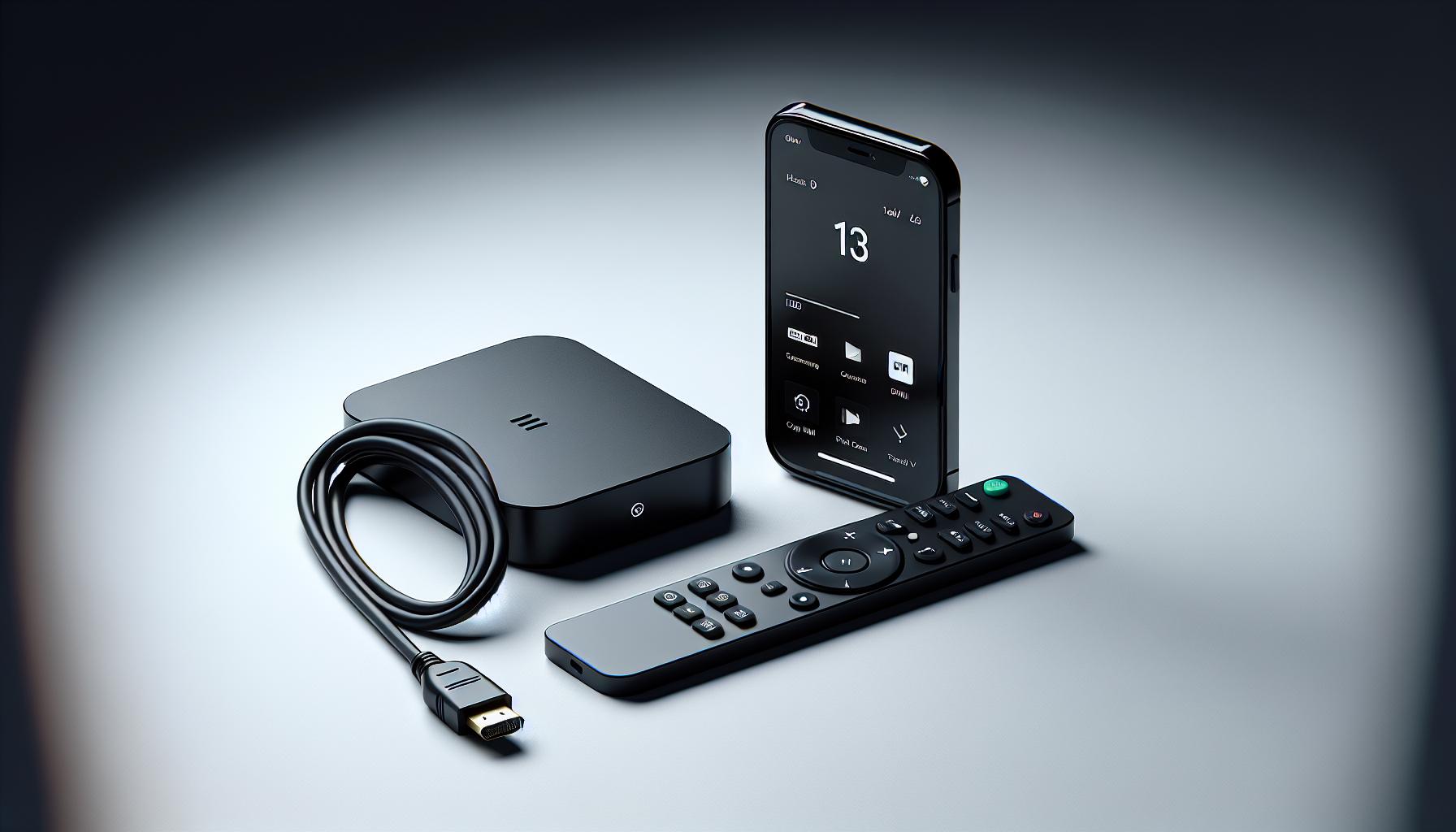Ever lost your Apple TV remote and wondered how to connect your Apple TV to WiFi? Don't worry, you're not alone. It's a common issue and luckily, there's a simple solution.
In this guide, we'll walk you through the process step by step. You'll learn how to use alternative methods to connect your Apple TV to WiFi without needing the remote. It's easier than you might think and doesn't require any technical know-how.
Why Do I Need to Connect Apple TV to WiFi?
Understanding why it's essential to connect your Apple TV to WiFi can clear up many queries from the get-go. Here's the lowdown on the relevance of WiFi connectivity for your Apple device.
The primary reason revolves around accessing and enjoying streaming content. Without a stable WiFi connection, your Apple TV is virtually useless. Streaming platforms like Netflix, Amazon Prime Video, Hulu, and countless others require an internet connection to stream favorite movies, music, and TV series.
Plus, Apple's very own services like iTunes and Apple Music can't work without WiFi. That means you'll miss out on the thousands of songs, podcasts, and movies offered exclusively by Apple.
Additionally, features like AirPlay won't work without a WiFi connection. With AirPlay, you can wirelessly stream videos, music, and photos from your iOS device directly to your Apple TV. It's a fantastic feature that adds tremendous value to your Apple ecosystem.
Most of the updates for the Apple TV software also come through WiFi. Through these updates, Apple provides performance enhancements and fixes any bugs or issues, enhancing your overall user experience.
Reports reiterate that Apple might launch newer models with advanced features that will possibly require WiFi to work effectively. Being prepared with these instructions could ensure you're not left in the dark when that happens.
Basically, WiFi allows your Apple TV to function at its full potential. It makes life easier and your TV viewing experience considerably better. Yes, life without an Apple TV remote can be frustrating but once you know how to connect your Apple TV to WiFi without it, you'll always be ready for a seamless, unrestricted entertainment experience. With the knowledge from this guide, you'll be the tech hero of your household.
High-speed internet connection or WiFi is no longer a luxury. It's a given. The world's moving fast, and these competencies are what you need to keep up. Let's delve deeper into it: Here's the continuation of our guide...
Alternative Methods to Connect Apple TV to WiFi Without Remote

Losing the remote control can cause an annoying setback. Still, you'll be glad to know there are alternative methods to connect your Apple TV to WiFi. Here are a few you can try.
Use the Apple TV App on Your Smartphone
An easy and popular way to control Apple TV without a remote is by using the Apple TV App on your smartphone. Sure, it might seem slightly complicated, but trust us, it's pretty simple. Follow these steps:
- Download the Apple TV app from the App Store. If you're an Android user, no worries, you can find compatible apps in the Google Play Store.
- Ensure your smartphone and Apple TV are on the same WiFi network.
- Open the app then select your Apple TV from the list of available devices.
Use a Wired Ethernet Connection
Wired connections offer another alternative. Although it's slightly old school and may not seem like the perfect solution, it is reliable. Here's what you need to do:
- Connect your Apple TV to the router using an ethernet cable.
- Once connected, utilize the Apple TV app to control the device and connect it to the WiFi network.
Use Your Television's HDMI CEC
HDMI CEC (Consumer Electronics Control) allows you to control different HDMI-connected devices with one remote. If your television supports HDMI CEC, it's merely another method:
- Enable the HDMI CEC feature on your television.
- Use your TV remote to control your Apple TV. Browse through and modify Apple TV settings to connect it to your WiFi network.
Make sure to try these methods the next time you need to connect your Apple TV to WiFi without a remote. No need to let a lost remote ruin your entertainment.
Method 1: Using the Control Center on iPhone/iPad
Imagine having the power to control your Apple TV right in your pocket. Luckily for you, this is not just wishful thinking. Your iPhone or iPad can double as a remote for your Apple TV. It's simpler than you'd think.
For this method, you’ll need an iPhone or iPad running on iOS 11 or later. Plus, ensure your Apple TV, Ivory or iPad is updated, and they're logged on to the same iCloud account. This way, all your devices are in sync and ready to cooperate! Here's what you need to do:
- Swipe up from the bottom of your iPhone/iPad’s screen to open the Control Center. On an iPhone X or newer or an iPad running iOS 12 or later, you’ll swipe down from the top right of your screen.
- Tap the Apple TV Remote button.
- In the new screen that appears, tap your TV. If asked, add your Apple TV.
And voila, you now have a handheld remote right on your iOS device. This method is easy to follow and efficient. Plus, it opens up other avenues of control, like using Siri commands to manipulate Apple TV.
Above all, don’t fret if you can’t get it to work right away. Take your time and follow these steps in sequence. The solution is often simpler than it appears. With your iPhone or iPad in hand, you'll have control over your Apple TV in no time.
Method 2: Using the Apple TV Remote App
If you're unable to find the physical remote for your Apple TV, there's no need to worry. Apple provides an alternative method that you can use to take control of your Apple TV's functions. They've developed an app called Apple TV Remote. This app essentially turns your iPhone or iPad into a temporary remote control.
Before you begin, make sure you have the latest iOS software on your device. Also, your Apple TV should be running on the latest tvOS version. Here's a step-by-step guide to assist you in using the Apple TV remote app to connect your Apple TV to WiFi:
- Download the Apple TV Remote app from the App Store on your device. It's free and easy to use.
- Open the app and choose 'Add Apple TV', then follow the prompts.
- Once it's linked, select 'Settings' on your Apple TV.
- Then select 'Network' and select the name of the WiFi network you'd like to connect to.
- Input the WiFi password using the app's keyboard interface.
Embrace the convenience this app offers by being user-friendly and efficient. You'll get access to all major functions including the control of media playback and volume adjustments.
The Apple TV Remote App also supports Siri commands, allowing you to utilize voice controls for making the process even easier. So, it's not just a step-by-step replacement for your missing remote. It's a complete upgrade that provides added flexibility and convenience.
This app is a superb secondary control option for your Apple TV. It's worth mentioning that the app only works when your iPhone or iPad and the Apple TV are connected to the same WiFi network. Therefore, it's crucial that your devices are connected properly before attempting to use them as a remote control.
So there's another way to navigate through the hiccup of a missing Apple TV remote. Don't forget to ensure your devices meet the aforementioned requirements. Armed with these tips, you can restore your Apple TV's connection to WiFi without even touching the physical remote.
Method 3: Using an HDMI-CEC Enabled TV

HDMI-CEC, or High Definition Multimedia Interface- Consumer Electronics Control, might sound daunting, but it's a feature in many modern televisions. This function allows individual devices that are connected via HDMI to communicate and control one another, like your Apple TV and your smart TV.
Let's get down to business. If your TV supports HDMI-CEC, it's highly likely you can control your Apple TV even without that elusive remote. Here's how:
- First, power on your TV and switch to the HDMI input that your Apple TV is connected to.
- Next, search your TV's settings for a feature called HDMI-CEC. It may have a different name, depending on the brand of your TV. Some names you might encounter are EasyLink (Philips), Bravia Sync (Sony), or Viera Link (Panasonic).
- Activate this option. Your TV should now be able to communicate with your Apple TV.
Now that the HDMI-CEC function is enabled, you'll find that your TV remote has become a universal remote of sorts. It can control other devices linked to your TV, including your Apple TV. So in essence, you can use your TV remote to do plenty, like navigate the Apple TV interface, play or pause videos, and even select Wi-Fi networks!
To make things even easier, consider labeling the HDMI input as Apple TV in your television's settings. This way, when you switch sources, you'll know exactly where to go. In some cases, enabling HDMI-CEC can even turn on your TV when you wake your Apple TV—that's how smart things can get!
Remember, every issue has a solution if you know where to look. By stepping back and learning about the tech you already have, you can make things a lot simpler. Using this method, you effectively turn your regular TV remote into your new Apple TV remote. So potentially, it's a problem-solver for anyone with an HDMI-CEC enabled TV to control their Apple TV without a remote.
Conclusion
You've now discovered the ins and outs of connecting your Apple TV to WiFi without a remote. Whether it's through the Apple TV app, a wired Ethernet connection, or the HDMI CEC feature on your TV, you're no longer left in the dark. The game-changer is the method using an HDMI-CEC enabled TV. By simply enabling the HDMI-CEC function and labeling the HDMI input as Apple TV, your TV remote becomes a surrogate Apple TV remote. So, don't fret if you've misplaced your Apple TV remote. These alternatives ensure you're always connected and ready for your next streaming adventure.
Frequently Asked Questions
Can I connect Apple TV to WiFi without a remote?
Yes, you can connect Apple TV to WiFi without a remote. The detailed steps are discussed in the main article. One way is using the Apple TV app on your smartphone. Other methods include using a wired Ethernet connection and enabling HDMI-CEC on your TV.
What is HDMI-CEC and how does it work?
HDMI-CEC is a feature on most televisions that allows control of connected devices using a single remote. You can turn your TV remote into an Apple TV remote by enabling this function on your TV.
What are the advantages of using the HDMI-CEC feature?
The HDMI-CEC feature adds ease and convenience by allowing users to control their Apple TV using their TV remote. Another advantage of using HDMI-CEC is that it allows you to label the HDMI input as Apple TV in your TV settings.
Is it difficult to set up the HDMI-CEC feature for Apple TV?
Not at all. Detailed step-by-step instructions on how to set up the HDMI-CEC feature for your Apple TV are provided in the main article.




